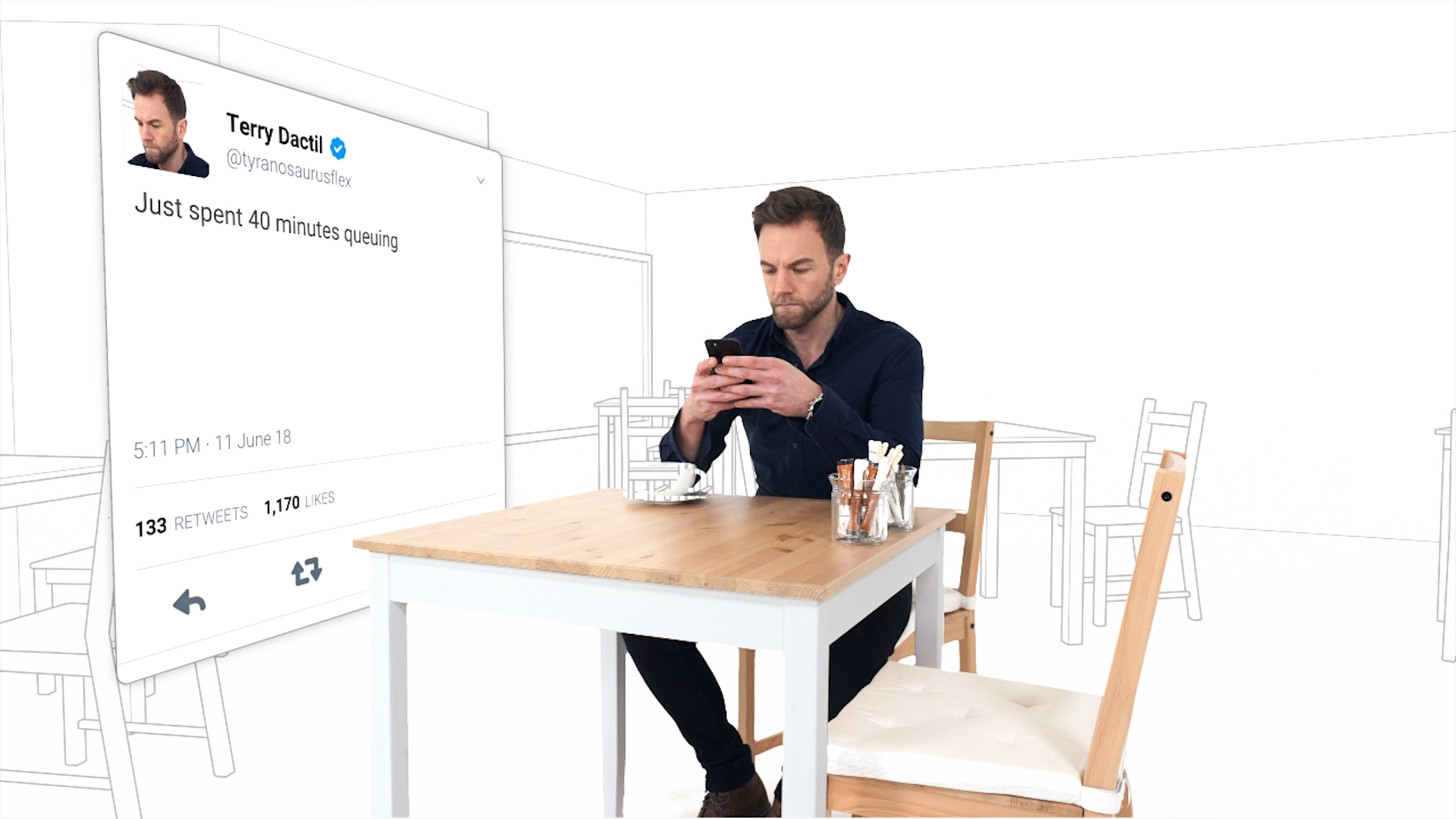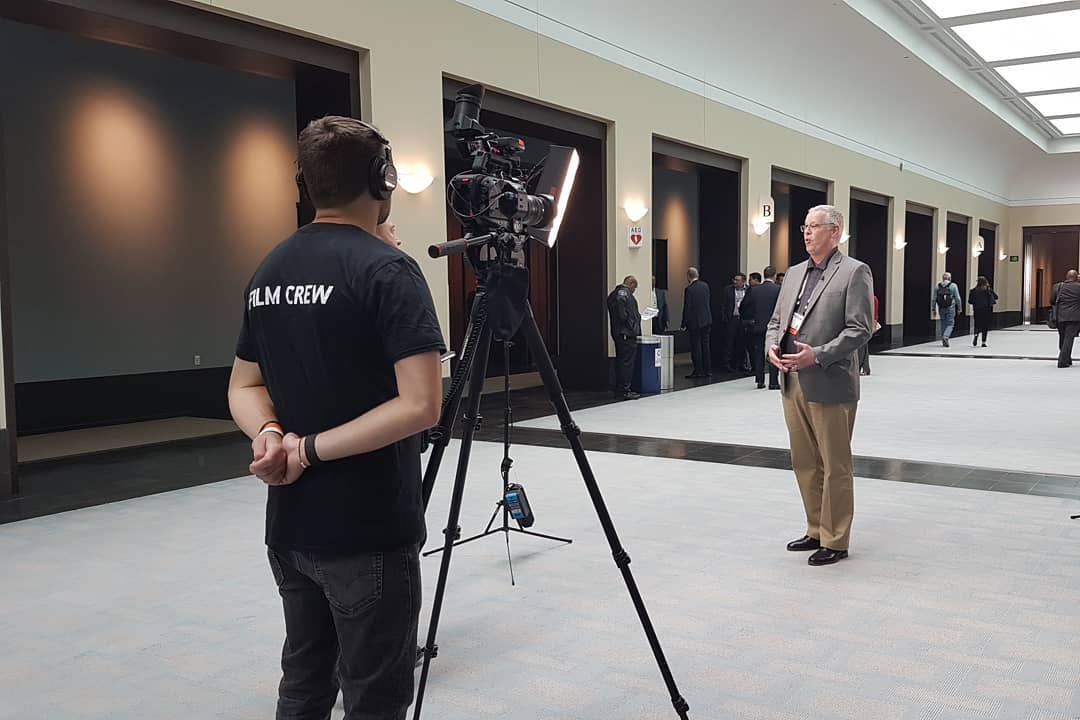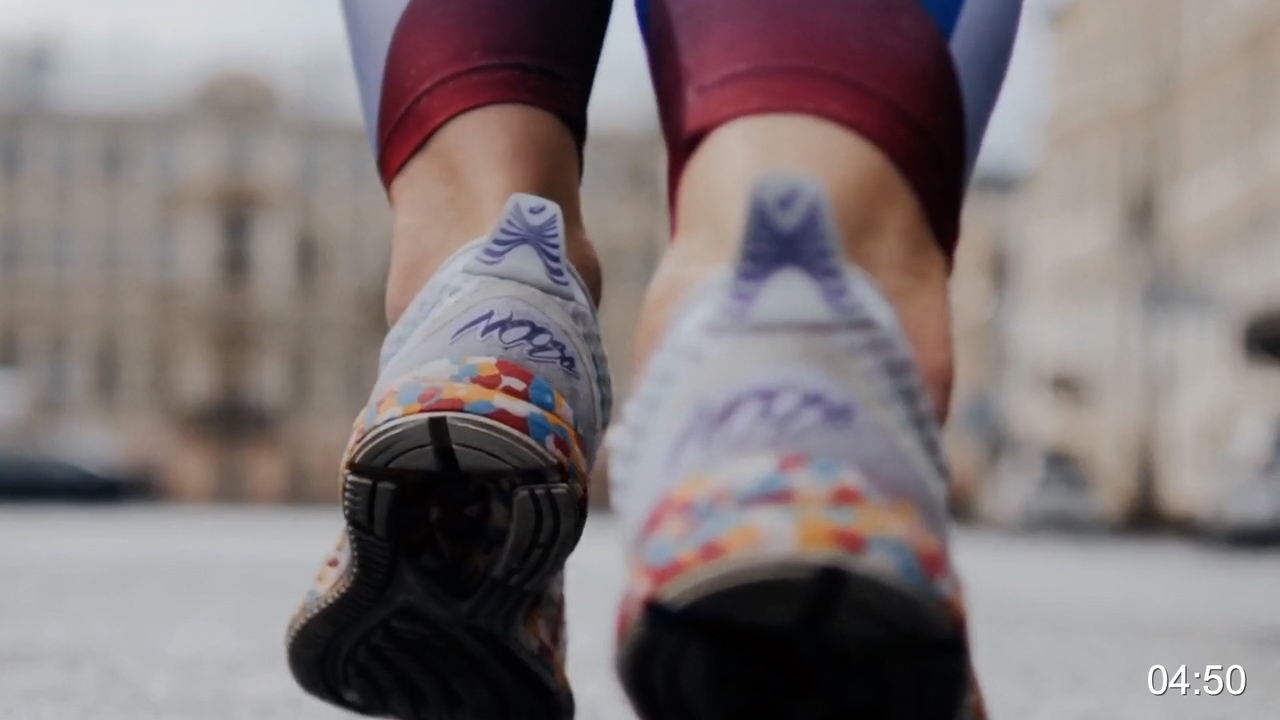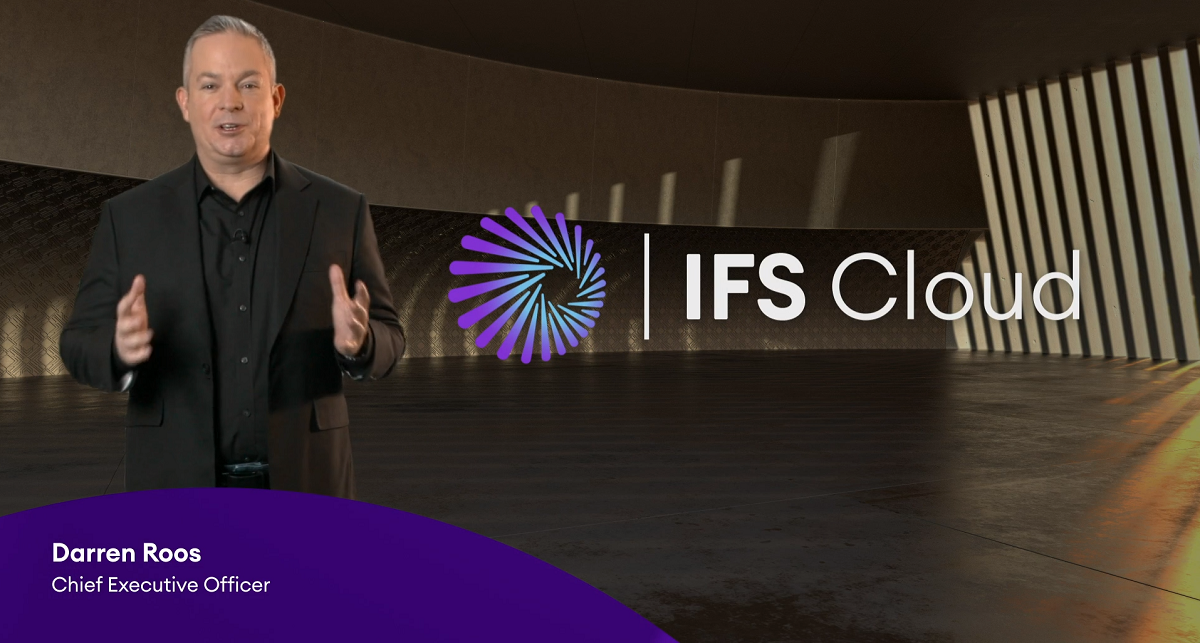What are the costs and how can you control your video production budget?
Video production is a great way to promote your business or share your message with the world. However, many people are unaware of the costs involved in producing high-quality video content. In this blog post, we'll explore the different video costs involved in video production, from pre-production to post-production.
Pre-Production video costs
The first stage of video production is pre-production, which includes planning, scripting, and storyboarding. Pre-production costs can vary widely depending on the complexity of the project. Some of the pre-production video costs may include:
-
-
- Scriptwriting
- Storyboarding
- Location scouting
- Talent scouting
- Project management
-
Production video costs
The production stage is when the actual filming takes place. Production costs can be one of the most significant expenses in video production. Some of the production video costs may include:
-
-
- Crew salaries
- Equipment rental (camera, lighting, sound)
- Set design and construction
- Location rental
- Travel and food expenses (known as per diem)
-
Post-Production video costs
After filming is complete, post-production takes place, which involves editing, sound design, and visual effects. Post-production costs can be just as significant as production costs. Some of the post-production video costs may include:
-
-
- Video editing
- Sound design
- Colour grading
- Visual effects
- Music licensing
-
How can customers control their budget working with video production agencies?
Controlling budget creep when working with a video production company requires clear communication, thorough planning, and effective project management. Here's how customers can ensure that their video production stays within budget:
-
- Set Clear Objectives and Expectations: Clearly communicate your goals, vision, and budget constraints to the video production company from the outset. Make sure everyone is on the same page about what is achievable within the given budget.
- Detailed Scope of Work: Create a detailed scope of work that outlines all the elements of the project, from pre-production to post-production. Include specific deliverables, shooting schedules, locations, and any additional requirements.
- Limit Revisions: Specify the number of revisions or edits included in the project. Additional revisions beyond the agreed-upon number may incur extra charges.
- Review and Approve Scripts/Storyboards: Review and approve the script, storyboard, and any creative elements before production begins. This helps prevent costly changes later in the process.
- Collaborative Approach: Maintain an open and collaborative relationship with the video production team. Encourage them to suggest cost-effective solutions without compromising quality.
- Avoid Rushed Deadlines: Rushing production can lead to mistakes and additional costs. Plan a reasonable timeline that allows for thorough work without last-minute expenses. By implementing these strategies and maintaining effective communication with the video production company throughout the project, you can significantly reduce the risk of budget creep and ensure a successful video production that meets your goals and financial constraints.
Conclusion:
Video production can be a significant investment, but it's important to remember that the costs can vary widely depending on the complexity of the project. When planning your video production, it's essential to have a clear idea of your goals, timeline, and budget. By working with a professional video production company, you can create high-quality video content that meets your needs and stays within your budget.
What kind of video will work for you?
What makes video king? Part 2 of 3
In B2B (business-to-business) marketing, the content you create should be informative, educational, and tailored to the specific needs and challenges of your target audience. Here we look at what kind of video tends to work well in B2B marketing:
- Educational Tutorials and How-To Videos: These videos demonstrate how to use your products or services effectively. They can help businesses understand the value your offering brings and how it can solve their problems.
- Product Demonstrations: Showcasing your products in action can help potential clients understand their features and benefits. Highlight how your solution addresses specific pain points.
- Customer Testimonials and Case Studies: Real-world success stories from your existing customers can establish credibility and demonstrate the positive impact your product or service has had on their businesses.
- Thought Leadership and Industry Insights: Sharing your expertise through videos discussing industry trends, challenges, and solutions can position your brand as a trusted authority in your field.
- Webinars and Workshops: Hosting webinars or workshops on relevant topics can help establish your brand as a source of valuable information. Participants can engage with your experts and learn about your offerings in-depth.
- Explainer Videos: These concise videos explain complex concepts, processes, or solutions in a clear and engaging manner. They're particularly useful for introducing new technologies or ideas.
- Behind-the-Scenes Content: Offer a glimpse into your company culture, team, and processes. This humanizes your brand and fosters a sense of connection with potential clients.
- Comparison and Solution Comparison Videos: Compare your solution with others in the market, showcasing your unique selling points and explaining why your product or service is the better choice.
- Event Coverage: If you attend or host industry events, conferences, or seminars, creating videos that capture key moments can provide value to your audience and establish your presence in the industry.
- FAQ Videos: Address frequently asked questions and concerns in video format. This can help potential clients find quick answers and reduce barriers to engagement.
Remember, B2B audiences are typically looking for solutions that can streamline their operations, increase efficiency, and solve specific challenges. Your videos should focus on providing the kind of video that delivers value and builds trust by addressing these needs in a clear and relevant manner. Always tailor your content to the unique pain points and goals of your B2B audience.
Catch up on the whole series: Video in Marketing
Part 1: How-does-video-marketing-compare-with-other-mediums
Part 3: Where to host your video
Where to host video
Video in marketing series Part 3 of 3
Catch up on the whole series: Video in Marketing
Part 1: How-does-video-marketing-compare-with-other-mediums
Part 2: What kind of video will work for you?
How does video marketing compare with other mediums?
Video in Marketing Series Part 1 of 3
We produce video. We concept, storyboard, produce, film, edit and deliver video. Happily for us, it’s a growing media. According to Cisco: 82% of Global Internet Traffic in 2022 Came From Video* But just saying it doesn't make it real, so we've put together a series of guides on how does video marketing compare, why, how and what video you should be considering.
Video marketing has shown significant effectiveness compared to other mediums in terms of engagement, reach, and conversion rates. Here's a general overview of the advantages of video marketing compared to other mediums:
Higher Engagement Rates: Videos tend to capture and maintain audience attention better than text or images. According to various studies, videos have higher engagement rates on social media platforms and websites.
- Videos typically receive higher engagement rates than text or image-based content on social media platforms.
- Viewers retain 95% of a message when they watch it in a video, compared to 10% when reading it in text.
- Social media posts with videos have 48% more views.
Improved Conversion Rates: Video content can lead to higher conversion rates. Research has shown that including a video on a landing page can increase conversion rates by a significant percentage.
- Adding a product video to a landing page can increase conversions by 80% or more.
- Video can lead to a 200-300% increase in click-through rates in email marketing campaigns.
- 64% of consumers are more likely to buy a product online after watching a video about it.
Better Information Retention: People tend to remember visual content more effectively than text-based content. This means that your messaging is more likely to stick with your audience when presented in video format.
- Video content generates 1,200% more shares than text and images combined.
- 80% of users can recall a video ad they viewed in the past 30 days.
- Social video generates 1,200% more shares than text and images combined.
Enhanced SEO: Video content can positively impact your website's search engine optimization (SEO). Google and other search engines often prioritize video content in search results.
- Video content is 50 times more likely to drive organic search results compared to plain text.
Increased Social Sharing: Videos are highly shareable on social media platforms. Engaging and informative videos can quickly go viral, leading to increased brand exposure.
- YouTube is the second-largest search engine after Google, making it a valuable platform for search visibility.
- Facebook users watch over 8 billion videos daily.
- LinkedIn users are 20 times more likely to share a video on the platform than other types of posts.
Personal Connection: Videos can create a stronger emotional connection with your audience. Seeing and hearing people, products, and services can lead to a deeper sense of connection and trust.
- Live streaming offers a sense of authenticity and immediacy, allowing businesses to showcase their expertise and connect with their audience on a personal level.
Mobile-Friendly: With the rise of mobile device usage, videos are easily consumable on smartphones and tablets. Mobile users are more likely to engage with video content while on the go.
- Mobile video consumption rises by 100% every year.
- 92% of mobile video consumers share videos with others.
Global Reach: Video content has the potential to reach a global audience, making it an effective tool for businesses looking to expand their market presence.
- 92% of B2B customers watch videos online, and 43% of B2B buyers watch video content while researching products and services for their business.
- 83% of marketers say video content is becoming more important.
Live Interaction: Live streaming and interactive videos allow for real-time engagement with your audience, fostering a sense of community and immediacy.
- 80% of audiences prefer watching live video content from a brand over reading a blog.
- 67% of viewers who watched a live stream purchased a ticket to a similar event the next time it occurred.
Analytics and Insights: Many video hosting platforms provide detailed analytics, allowing you to track viewer behaviour, engagement rates, and other valuable metrics.
So, looking at how does video marketing compare there's a lot going for it and it can have a positive impact on marketing, social, websites and your business in general. Decide which factors mean the most to you and set your online presence and processes up ready to make the most of your video. It's important to note that the effectiveness of video marketing can depend on factors such as your target audience, industry, and the quality of your content.
Catch up on the whole series: Video in Marketing
Part 2: What kind of video will work for you?
Part 3: Where to host your video
AR Media's A to Z of video production terminology
Goobledegook… It's all very well using industry terminology between ourselves but we realise that sometimes we may use terms that our clients may not understand. So here's our A to Z of things you might hear us say when you commission us for a video project.
 |
Aspect Ratio: The proportional relationship between the width and height of a video frame. Modern videos tend to use 16:9, pre-2000s you might have used 4:3. (also included in the A to Z as its what the AR of AR Media stands for |
 |
B-roll: Additional footage used to support the main content of a video. It is often used to provide visual context or cover transitions. We often capture manufacturing processes, buildings, people at work for this. Bokeh: A favourite of cinematographers, bokeh is the blur effect seen predominantly on lights that are out-of-focus. |
 |
Colour Grading: The process of adjusting and enhancing the colours of a video during post-production to achieve a desired look or mood. The footage we capture in its raw format has a very flat/grey look, but this allows us to tweak the colours to make them as realistic as possible. |
 |
Depth of Field: The range of distance in a shot that appears in focus. A shallow depth of field has a narrow focal range, while a deep depth of field has a wider focal range. Filming an interview for example you would use a shallow depth of field to keep the subject in focus but the background intentionally blurry. |
 |
Exposure: The amount of light that reaches the camera's image sensor, determining the brightness or darkness of a video. A correctly exposed shot will display depths of black without blowing out any highlights such as clouds in the sky. |
 |
Frame Rate: The number of individual frames captured or displayed per second. Common frame rates include 24, 30, and 60 frames per second (fps). This has an effect on quality and also file size. |
 |
Grip: A member of the production crew responsible for setting up and maintaining equipment such as lighting fixtures, tripods, and camera rigs. We're a tight-knit team so every one of us gets involved in setup and breakdown. Gimbal: A device that holds the camera and allows us to turn in any direction freely and smoothly. |
 |
High Definition (HD): A video format with a higher resolution than standard definition, typically 720p or 1080p. But of course these days we record even higher in 4K. |
 |
ISO: The sensitivity of a camera's image sensor to light. A higher ISO allows for better low-light performance but may introduce more noise into the image. A low ISO makes for a finer picture but needs little movement in the frame. |
 |
Jump Cut: A jarring transition between two shots that are nearly identical, often used for stylistic effect or to compress time. J-cut: When the image of a scene is preceded by its sound or audio content. |
 |
Key Light: The primary light source used to illuminate the subject in a video. We'll often have a 3 light setup to balance the subject. |
 |
Lens: A must-have of every A to Z, the optical device that focuses light onto the camera's image sensor. Different lenses have various focal lengths and characteristics, affecting the perspective and field of view. Lavalier: A microphone that clips to the presenter's clothing |
 |
Montage: A sequence of rapidly edited shots, often used to condense time, convey a series of events, or evoke emotions. |
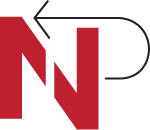 |
Non-linear Editing: The process of assembling and manipulating video clips out of chronological order using computer-based editing software. |
 |
Overexposure: When a video is too bright due to excessive light, causing details in the highlights to be lost. |
 |
Pan: The horizontal movement of the camera while it remains in a fixed position. We often use rails to slide the camera smoothly for this. Prime lens: a lens that uses a fixed focal length. These tend to be very high quality, very expensive and offer wide apertures. |
 |
QuickTime: A multimedia container file format developed by Apple, commonly used for video editing and playback. |
 |
Rack Focus: The technique of changing the focus from one subject to another within the same shot to shift the viewer's attention. |
 |
Storyboard: A visual representation of a video's planned shots or scenes, typically consisting of illustrations or images with accompanying descriptions. We can help you create these. Shotgun mic: Often used for broadcasting, TV and film production, sports and other applications where it is impractical or undesirable for the subject to wear or hold a microphone. |
 |
Tracking Shot: A shot in which the camera moves alongside or follows a subject, often achieved using a dolly or a stabilized gimbal. |
 |
Underexposure: When a video is too dark due to insufficient light, causing details in the shadows to be lost. |
 |
Voiceover: A recorded narration or commentary added to a video during post-production, typically synchronized with on-screen visuals. We have a full recording studio in our building for this. |
 |
White Balance: The adjustment of a camera's settings to ensure accurate color reproduction under different lighting conditions. |
 |
XLR: A type of professional audio connector commonly used for balanced audio signals in video production. |
 |
YouTube: We couldn't have an A to Z without mentioning a certain popular online video-sharing platform where users can upload, view, and share videos. Alternatives include Vimeo and Wistia. |
 |
Zoom: The change in focal length of a camera lens to make the subject appear closer or further away without physically moving the camera. Zoom shot: The illusion of moving closer or away from a subject, making them appear bigger or smaller. |
So there you have a brief A to Z of video terminology, enjoy and we hope you find it useful.
Trainers
Northampton Museum and Art Gallery houses one of the largest collections of shoes in the world, with over 15,000 pairs. In 2022 the museum curated an exhibition to take a closer look at the design, technology, cultural influences and environmental impact of trainers and showcase their own trainer collection, the largest owned by a public institution. To complement the physical event, AR Media were commissioned to produce a video looking at styles and asking people from all walks of life to talk about their favourite trainers.
Filmed on location in Northampton and in AR Media's studio, this is the result.
The exhibition ran until February 2023 and you can find out more about their wider shoe collection at: https://www.northamptonmuseums.com/directory/2/Collections/category/8
We'd like to thank: @twocustomisers and all our volunteers for making this video
Supporting the biggest product launch in IFS' history
The Brief
IFS develop and deliver enterprise software for customers around the world who manufacture and distribute goods, build and maintain assets, and manage service-focused operations. As recognised leaders in their industry, IFS have consistently grown their turnover and customer base, even during the 2020 pandemic and resulting lockdowns. As video production partners for over 8 years, AR Media were asked to assist in delivering the company’s single biggest product launch in their history, the launch of IFS Cloud and the global brand refresh.
The challenge
As a global software provider, IFS traditionally hold conferences every 18 months in locations across the globe. These events include keynote presentations, motivational speakers, breakout sessions and a large-scale trade show spread over 3 days.
With the world in lockdown, the challenge became how to bring the wealth of information, updates, entertainment and the most important product launch in IFS’s history to their clients through a virtual platform.
The product launch
The AR team collaborated with event organiser Jodi Egan, Senior Manager of Global Events to ensure we understand the 120+ videos and animations required from the many stakeholders and presenters.
With a production schedule in place, AR Media then orchestrated the planning, project managing, filming, editing and covid precautions of these videos both with our own team in the UK and with crews in Australia, Sweden, Sri Lanka and the United States.
“...your dedication, professionalism and willingness to put in some seriously long hours made it happen and we’re really grateful. No task (or change, re-edit or re-re-edit) is too much for you and it’s that amazing attitude that enabled us to deliver an event that we’re really proud of with and that’s shown in the very positive feedback from our customers and senior management team”. Jodi Egan, Senior Manager Global Events
The outcomes of these projects included real-time software demos, drone footage, outside broadcasts and green screen keynote presentations. At the same time, we also produced videos for behind-the-scenes of the IFS rebrand story and the new brand video for their Moment of Service message.
This is the first project I’ve worked with you on and it’s been an absolute pleasure working with such a professional team, thank you for your patience, and for delivering excellent results – the platform with all the content looked amazing!! Laraine Taylor, Global Events Operations Manager
The product launch results
2021 was a big step into the unknown for IFS. To put an event online that would meet their customers' expectations and attract new prospects was a big ask, but meet and exceed it they did.
Thousands of people attended the live event, learning of IFS’s future roadmap, new innovations and technologies.
Thousands more watched the live stream keynote session on LinkedIn
And tens of thousands watched the breakout sessions post-event and the videos AR Media created are still in use with the sales and marketing teams on a daily basis.
“It was great seeing your hard work up in lights, and I know a lot has gone into the storyboarding, sourcing, filming, editing (and all the re-edit asks 😊). The hours, nights and weekends you put in don’t get lost on us. We’re grateful, so thank you”. Oliver Pilgerstorfer, Chief Marketing Officer
Are you planning a conference that requires video?
127 videos, 3 days, 20 cameras = IFS World Conference
127 videos, 3 days, 20 cameras = 1 happy client

The job:
In October 2019 AR Media was commissioned as video partner at the IFS World Conference in Boston, USA. A 3-day event bringing over 2,000 clients, partners, celebrities, and employees together to talk big business. We were both excited and privileged to be involved.
The client:
IFS are a global business software provider that enable manufacturers and service providers to optimise their business costs, processes, and offerings through intelligent information. The team at AR Media had worked with IFS for over 5 years and in 2019 we became a trusted partner in video production capitalising on our experience of their industry, their product and the events they organise.
But this time was a little different. This time our client wanted over 100 breakout sessions captured and edited. A daunting task.
Preparing for the world conference:

AR Media flew out a team of 8 comprising: camera operators, editors, and project managers, plus cameras, lights, and lenses. At the venue, we set-up basecamp with 4 edit suites and hired an additional 13 cameras and operators to cover all breakout sessions. With everything in place our teams split into 2; a mobile team ready to work with our client to record interviews, events and capture the conference atmosphere. The 2nd team focused entirely on capturing, backing up, and editing the breakouts after every session.
The IFS World Conference
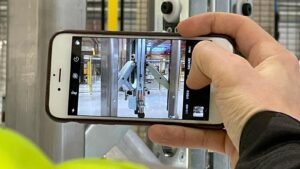
As the event went live we were there to capture people arriving, visiting trade stands, attending keynote speeches, and networking.
We were setup in each room working with the on-site AV engineers to capture audio direct from the desk, and liaising with the AV team running the main stage to capture the Keynote presentations. Presenters included Tony Hawk, Tia-Claire Toomey, and Lewis Pugh.
Our mobile team were on call day and night, working closely with the IFS Marketing team to capture interviews on the fly, delegate reactions and soundbites about why they’d come and what they’d got from attending. Appreciation night had them working into the night capturing the atmosphere, networking, events, and live acts including Lewis Capaldi.
The breakout team were in action throughout the event, managing camera operators, filming every breakout session, juggling up to 13 simultaneous sessions and began editing on-site to deliver professional video of the presenters cut with the slides they presented.
In summary
Attendees are C-suite professionals from market leading manufacturers. They invest a lot of time and money coming to this event so it has to provide real, tangible value. IFS achieve this by providing a 3 day event packed with networking opportunities, world class keynote speakers, and access to IFS experts who can show them how to get the most out of their software.
AR Media’s remit is to provide a reminder of what attendees experienced, events from other parts of the conference they may have missed, and to give prospective clients an idea of why they should attend in the future. Or in simple terms; 127 videos, 3 days, 20 cameras and 1 happy client.
See the closing video at: https://vimeo.com/371641862
Are you planning a conference that requires video?
Download our event video checklist below or contact us to talk about your requirements:
studio@ar-media.co.uk or 01604 621600

